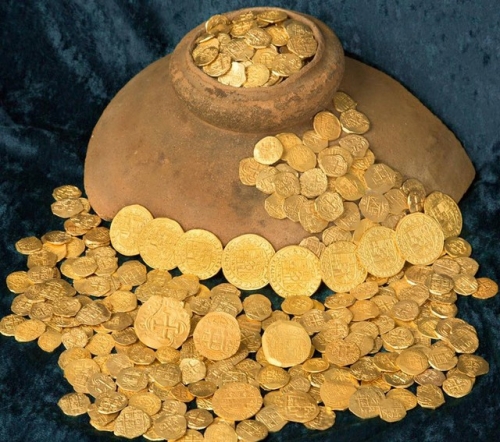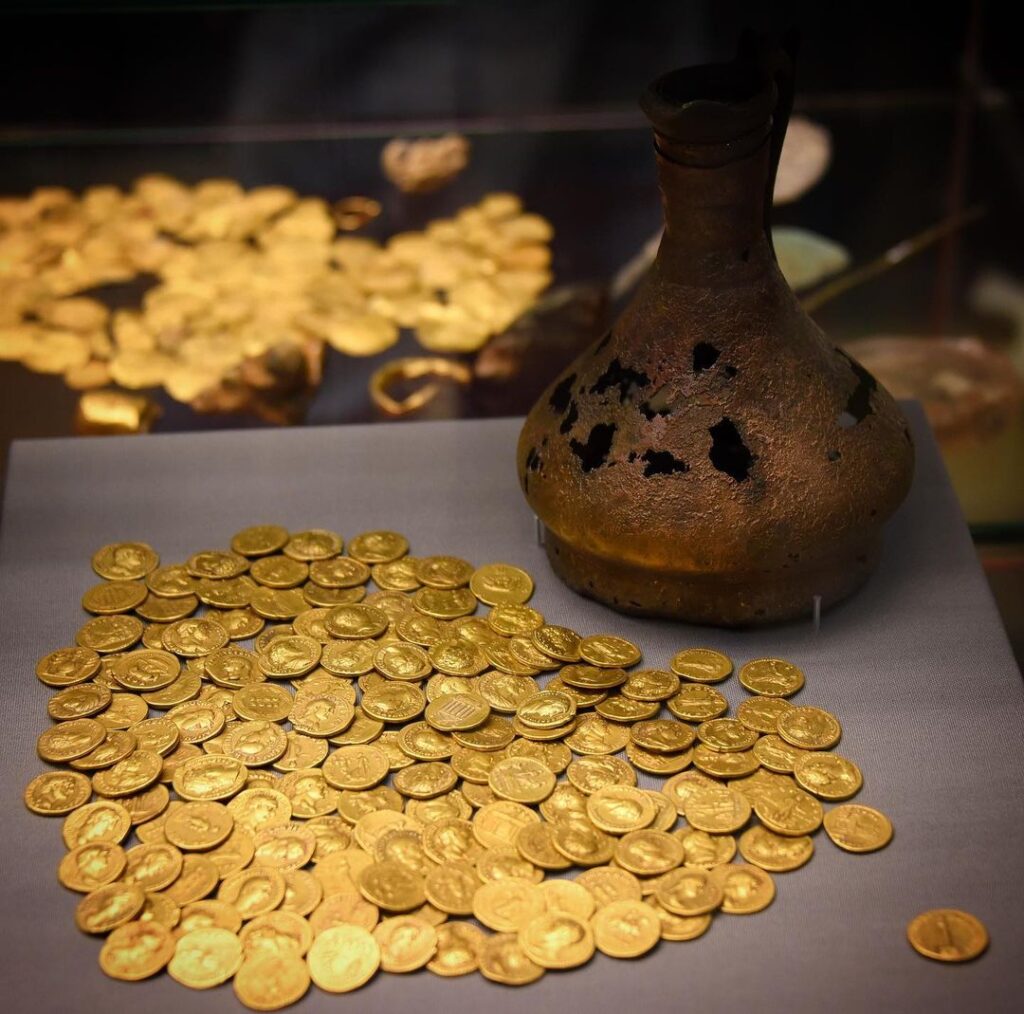Discovery of the Corbridge Hoard
In 1911, an extraordinary discovery was made beneath the floor of a Roman house in Corbridge, Northumberland, UK—a hoard of 160 gold aureus coins concealed in a bronze jug. This find, known as the Corbridge Hoard, has become one of the most significant Roman treasure discoveries in Britain, dating back to around 160 CE. The hoard was hidden in such a clever way that its true value remained unknown for nearly two millennia.

The Ingenious Concealment
The bronze jug containing the hoard was cleverly sealed with two bronze coins wedged into its neck, masking the treasure inside. This subtle deception was likely intended to hide the jug’s true worth, preventing casual thieves or invaders from recognizing its importance. When the jug was carefully lifted from the ground during the excavation, the weight of the gold coins inside became apparent, revealing a hidden treasure of immense value.
Historical Context of the Hoard
The hoard dates to circa 160 CE, a period of relative stability within the Roman Empire, but also one of constant military campaigns along the empire’s borders. Corbridge, located near Hadrian’s Wall, was an important military and trading hub, serving as a key link between Roman Britain and the northern territories. The presence of such a large amount of gold in Corbridge suggests a wealthy owner, likely a Roman official or trader, who sought to safeguard their wealth in turbulent times.
The coins themselves are aurei, which were high-value gold coins used throughout the Roman Empire. Their discovery in Britain highlights the far-reaching influence of Roman currency and trade networks, connecting even the distant provinces to the wealth of Rome.

The Bronze Jug: More Than a Container
The bronze jug that housed the coins is a significant artifact in its own right. Crafted with care, it was not just a simple storage vessel but a piece of everyday Roman life. The use of bronze in its construction indicates a degree of wealth, as bronze was a valuable material in ancient times. Its role as a hiding place for such a large number of gold coins elevates its importance, transforming it from a mundane object into a key player in this ancient mystery.
The Value of the Corbridge Hoard
At the time, the 160 gold aurei would have represented an enormous amount of wealth. Each aureus could pay a Roman soldier’s wages for an extended period, making the total hoard a fortune. The discovery of this hidden wealth raises intriguing questions: Was it buried in anticipation of a potential crisis? Did the owner ever return to reclaim it? Or was it forgotten amidst the turmoil of Roman Britain’s later years?
What the Hoard Tells Us About Roman Britain
The Corbridge Hoard offers valuable insight into the economic and social conditions of Roman Britain. It highlights the strategic importance of Corbridge as a hub of commerce and military activity. The hidden nature of the hoard also suggests that even in relatively peaceful times, there was an undercurrent of uncertainty, where wealthy citizens felt the need to hide their fortunes.
The hoard also serves as a reminder of the connectivity within the Roman Empire. Despite Corbridge’s location on the northern frontier, the presence of gold aurei reflects the reach of Roman trade networks and the circulation of currency across vast distances.
Conclusion
The Corbridge Hoard and Jug are more than just an ancient cache of coins—they are a window into the daily life, economic practices, and societal concerns of Roman Britain. The ingenuity used to hide the treasure, combined with the high value of the coins, makes this discovery both fascinating and significant. It reminds us that even in remote corners of the Roman Empire, wealth, power, and the fear of losing it were ever-present themes. Today, the Corbridge Hoard remains a treasured artifact, providing historians and archaeologists with a deeper understanding of the Roman world.

